10 Reddest Animals And Birds In The World
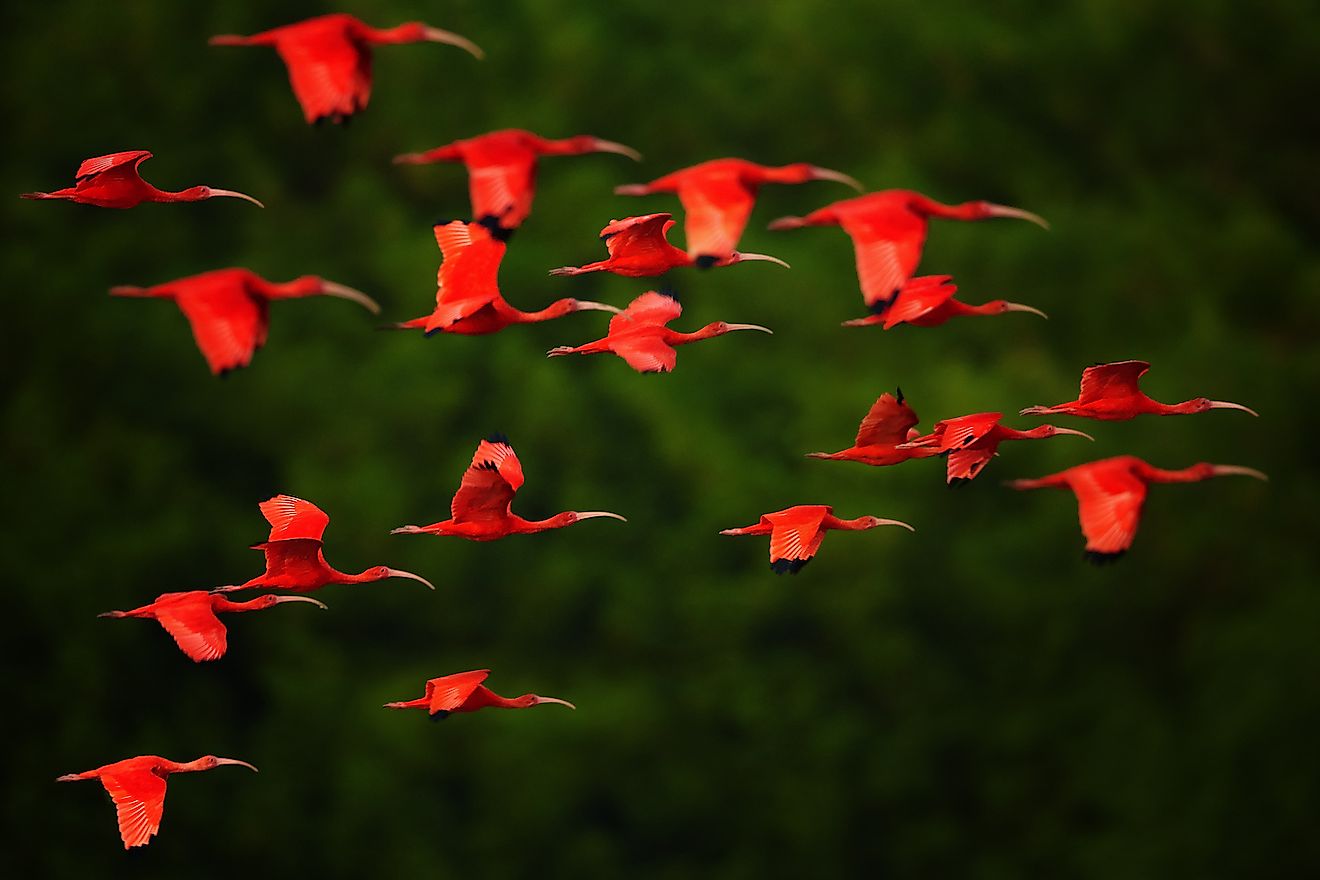
- Animals use bright colors to attract their mate or possibly warn others that they pack venom or poison.
- The Scarlet Ibis is one of Trinidad and Tobago’s national birds. They are white or brown early in life but turn red as their diet switch to crustaceans.
- The Red Velvet Mite has an exterior that’s covered with red hair. The color wards off predators—warning them that these critters taste awful when eaten.
Forests around the world are teeming with fauna in different colors. While some use shades like brown and green as a camouflage to blend with the surroundings to hide from predators, others use bright, vibrant hues to attract a mate or possibly warn other animals. According to the American Museum of Natural History (AMNH), some animals use bright vibrant colors to warn others that they pack venom or poison. “Many different animal species use bright colors and patterns to advertise the fact that they would make a horrible snack,” AMNH explains.
Among the animals that have fascinated biologists are those that are covered all over in bright crimson or scarlet fur, feathers, shell, or scales. Many of them use the color red to find a mate, warn others of their poison, or easily find others like them. Here’s a list of the most fascinating, most vibrant, reddest animals in the wild.
10. Red Cardinal
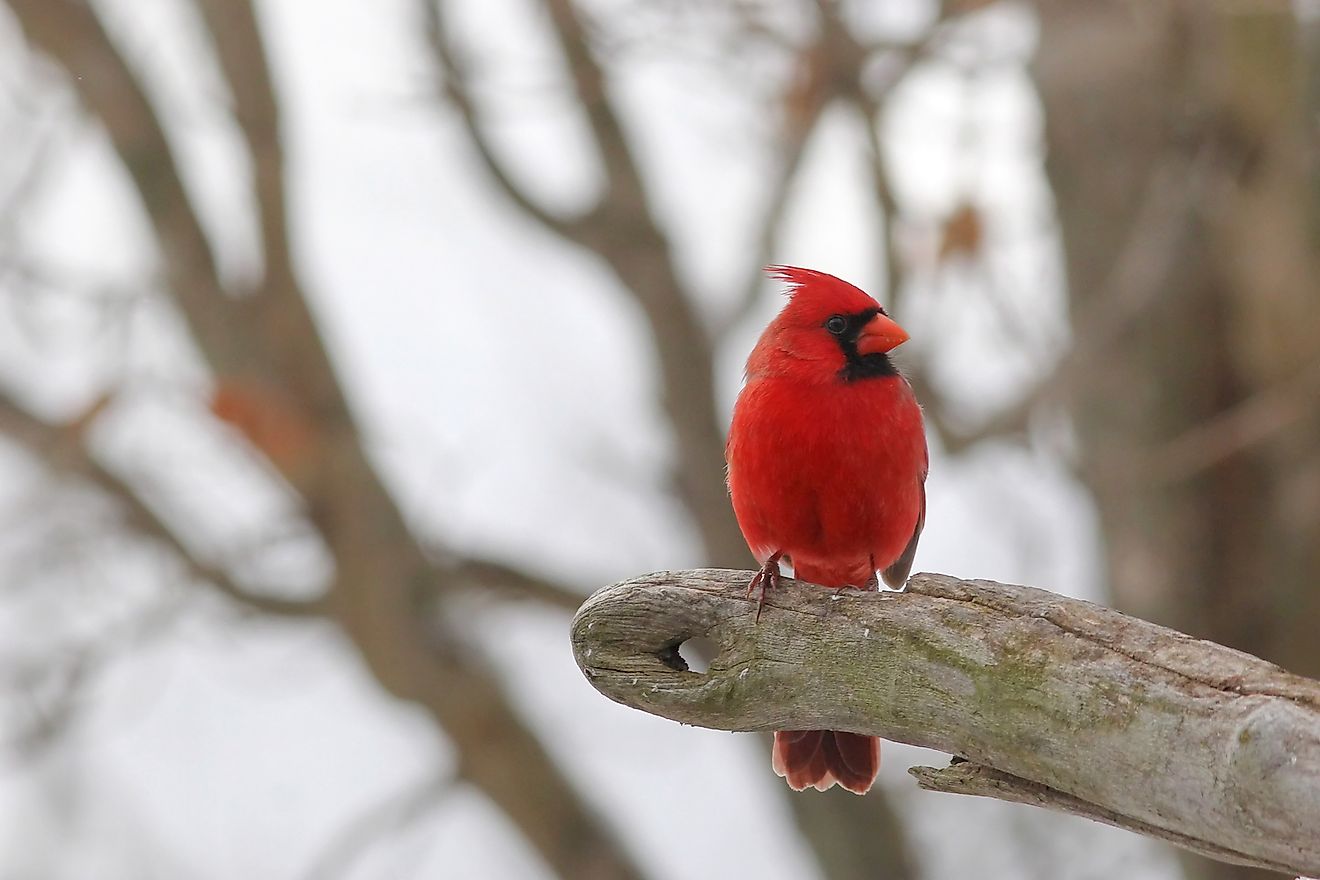
The Northern Cardinal is a relatively large songbird (around eight to nine inches in size) with a very short bill and can be found in the US and Canada. The male Northern Cardinal are larger than females and are covered in red feathers with a distinct crest on the top of their heads. The color plays a significant role in the life of a male Cardinal. According to the Canadian Wildlife Federation, males that are bright red are more successful than their paler counterparts. “They have greater reproductive success, get ranges with better food supplies, and are able to feed more frequently.”
9. Red Velvet Mite
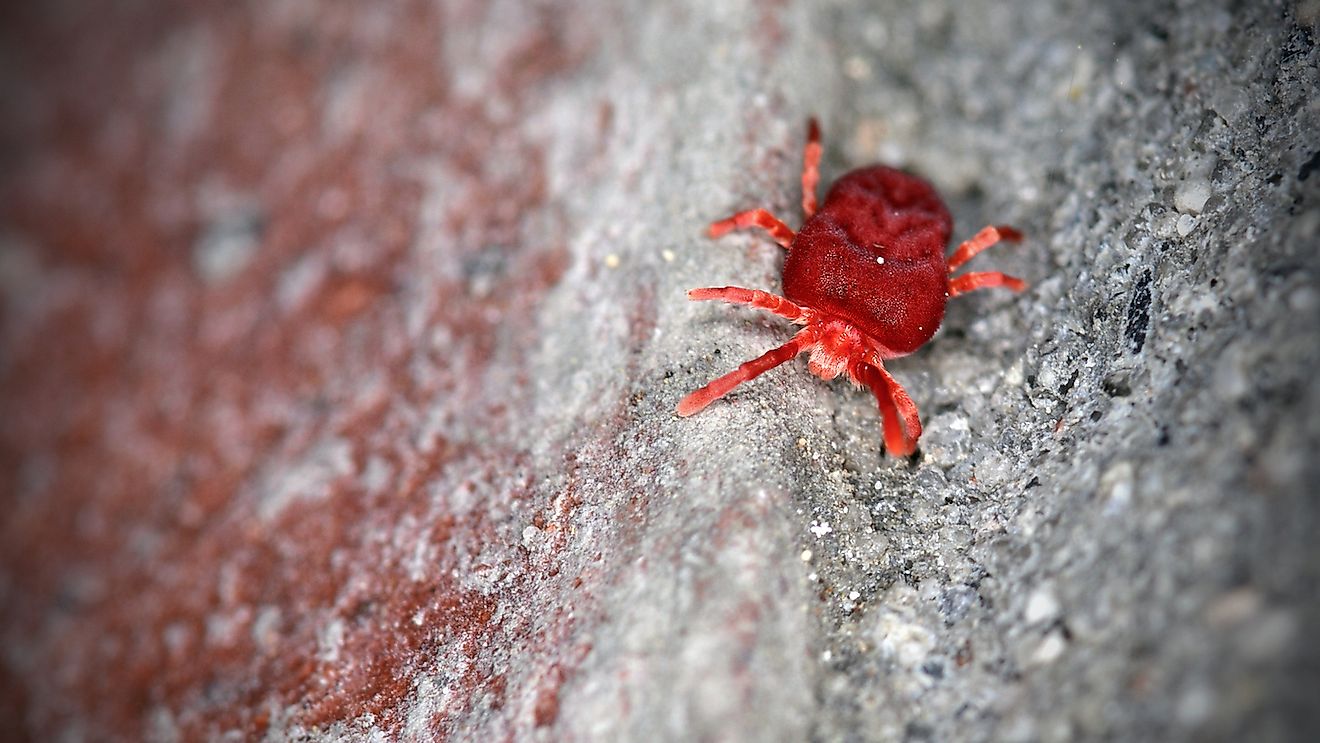
Considered ginormous compared to other mites, the red velvet mite can grow up to 5mm long. Its fragile-looking cloth-like exterior is covered with red hairs that scientists believe act as sensors. As intimidating as they look they don’t normally bite or sting humans. They live deep in the woodlands or forests and feed on other insects. Some of them are found in Europe, North and Central areas of the Arabian Peninsula, and Asia, and North Africa. Other species are found in Northern India. The red color serves to warn predators that these critters taste bad.
8. Mediterranean Red Sea Star
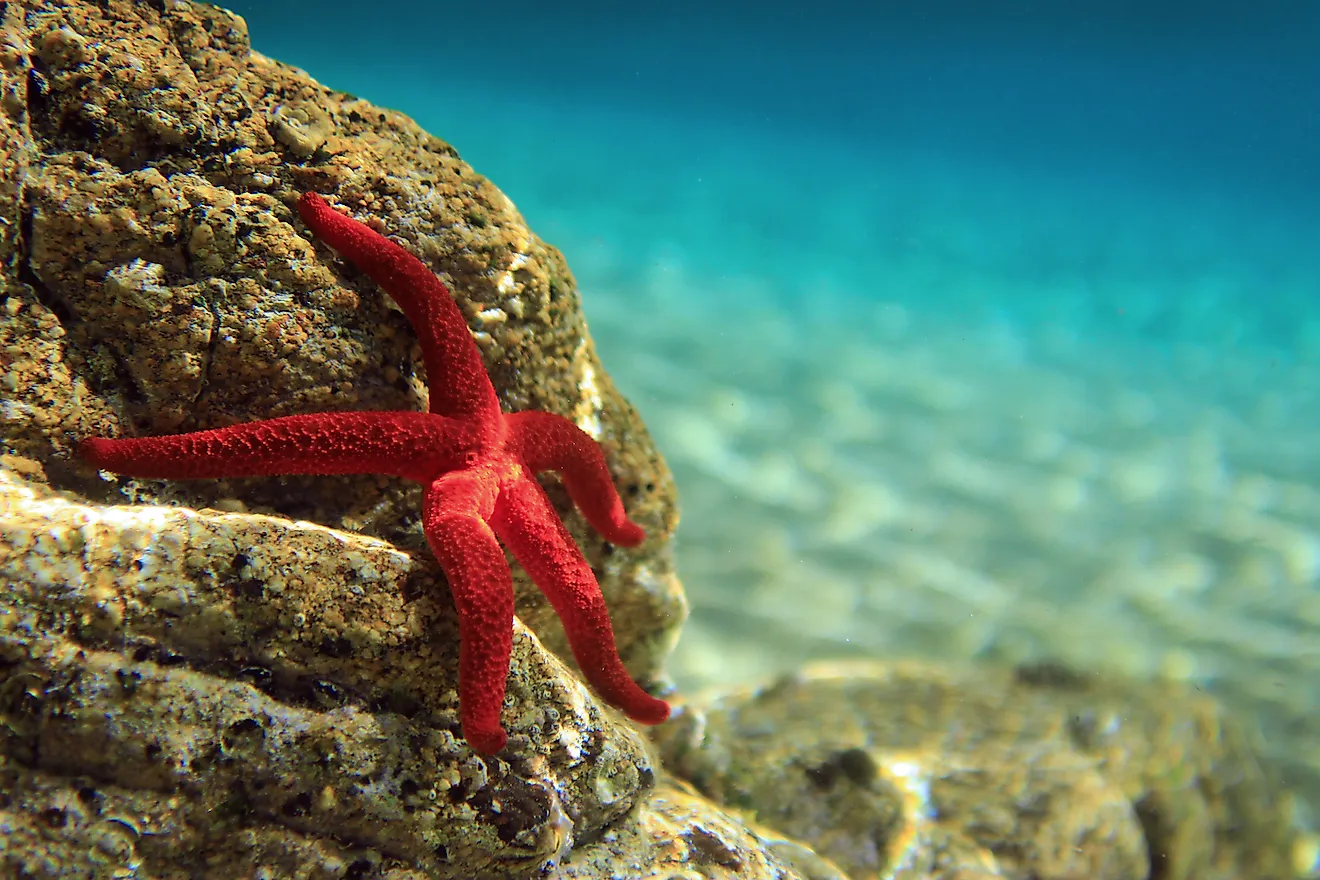
Also known as the Blood Star, the Mediterranean Red Sea Star is a species of starfish than live in the Eastern Atlantic Ocean and the Mediterranean Sea. They can survive in depths of 1 to 250 meters and have up to seven arms. They can grow as big as 30 centimeters and are covered in soapy exterior with spines. Their eggs are also red and are known to directly develop into little starfishes.
7. Scarlet Lily Beetle
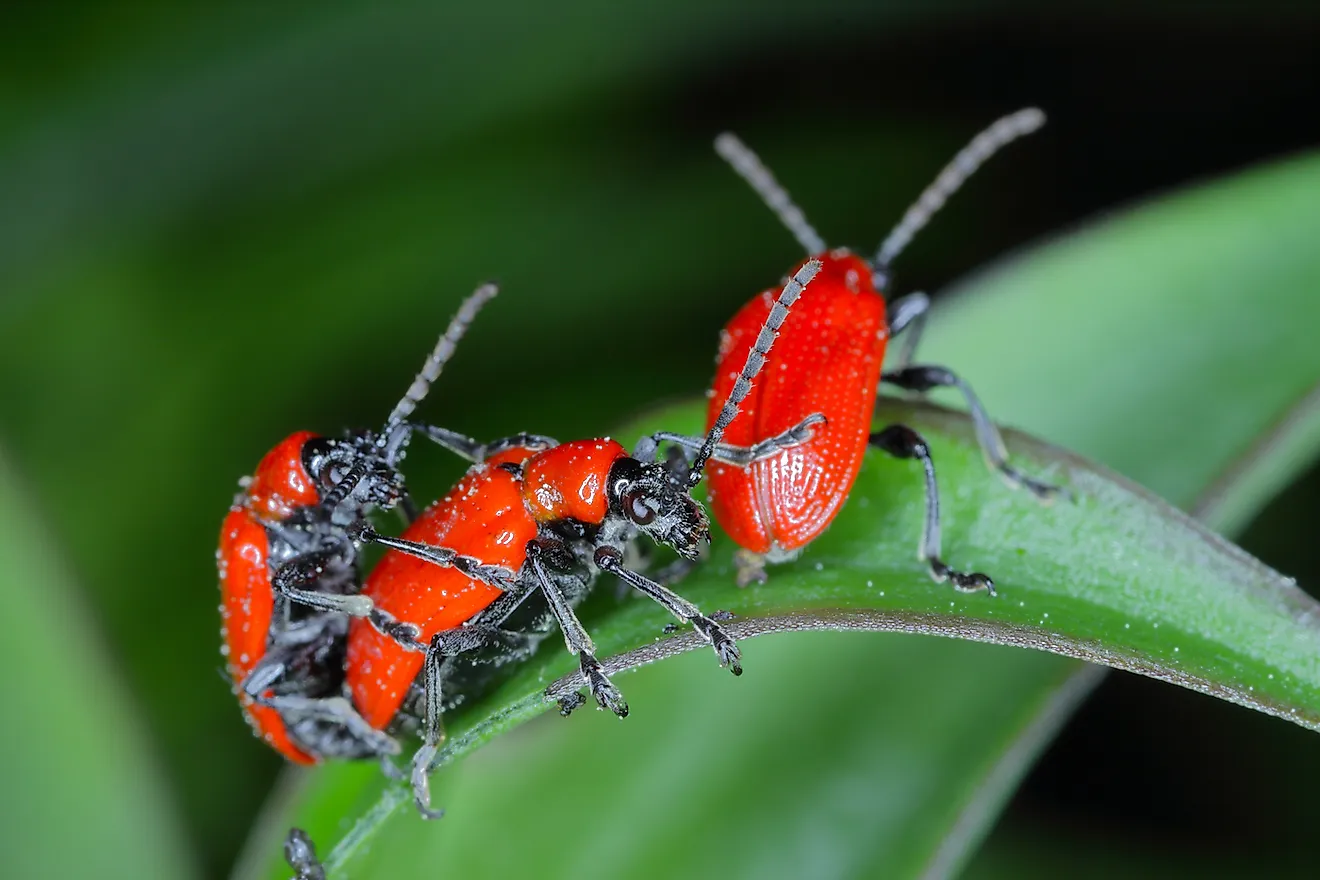
These are bright red scarlet beetles that can wreak havoc on gardens. They are voracious eaters that feed on the leaves, stems, flowers of Lillies, and other ornamental plants. They spread rapidly with females laying up to 450 eggs per season. The adult beetle can grow up to 10 mm long, with a bright red exterior and large black, head, black antennae, and eyes. They are invasive pests that can decimate a garden almost overnight.
6. Scarlet Ibis
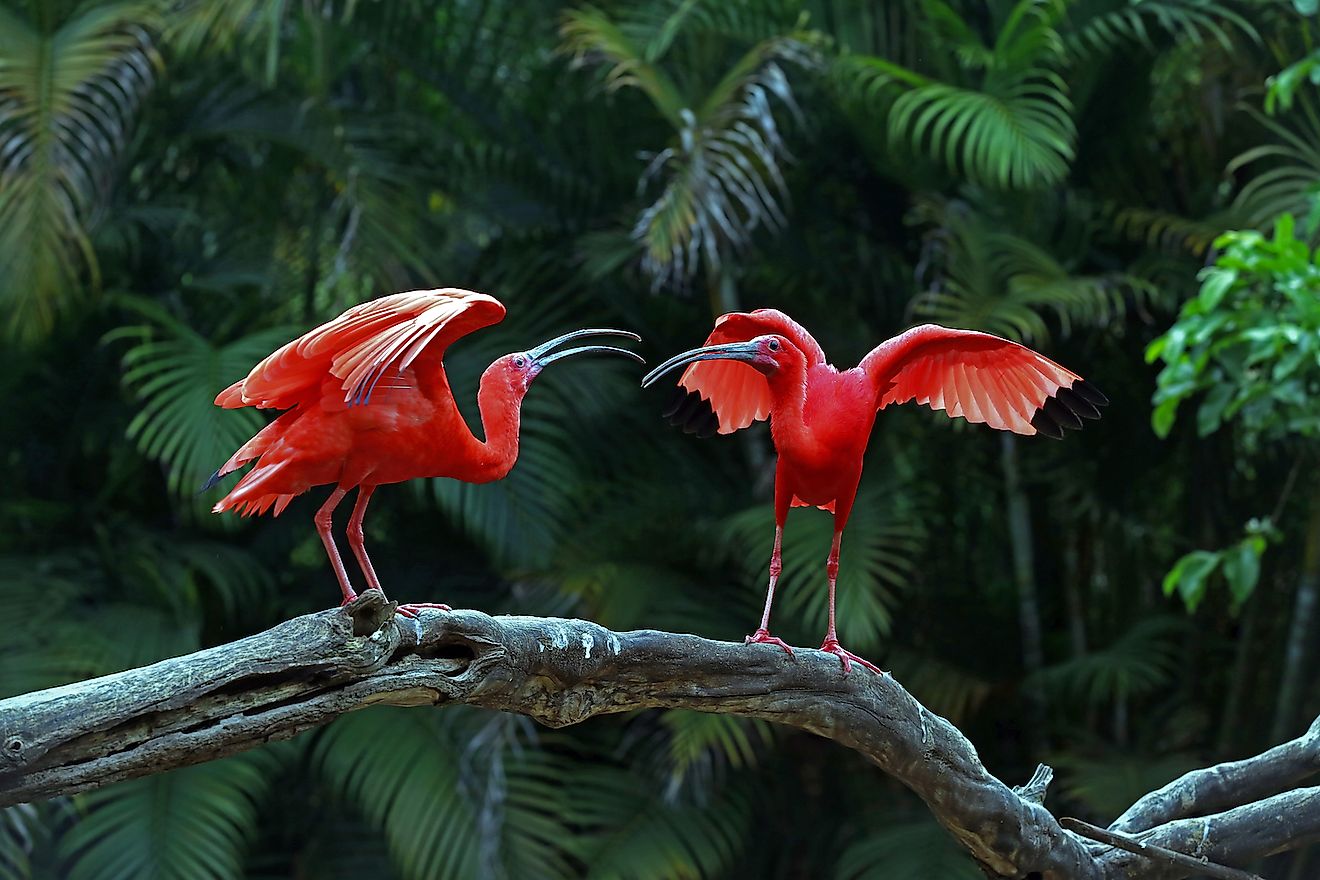
The Scarlet Ibis is a species of bird found mostly in South America and the Caribbean and is one of the two national birds of Trinidad and Tobago. These fascinating creatures are quite distinct for their crimson feathers and a long, dark bill that curves downwards. They live in wetlands, mudflats, and mangrove swamps and feed on fish, reptiles, frogs, and crustaceans. Young ibis starts with white or brown feathers and then develop the red coloring after eating crustaceans as they grow into adulthood.
5. Siamese Fighting Fish
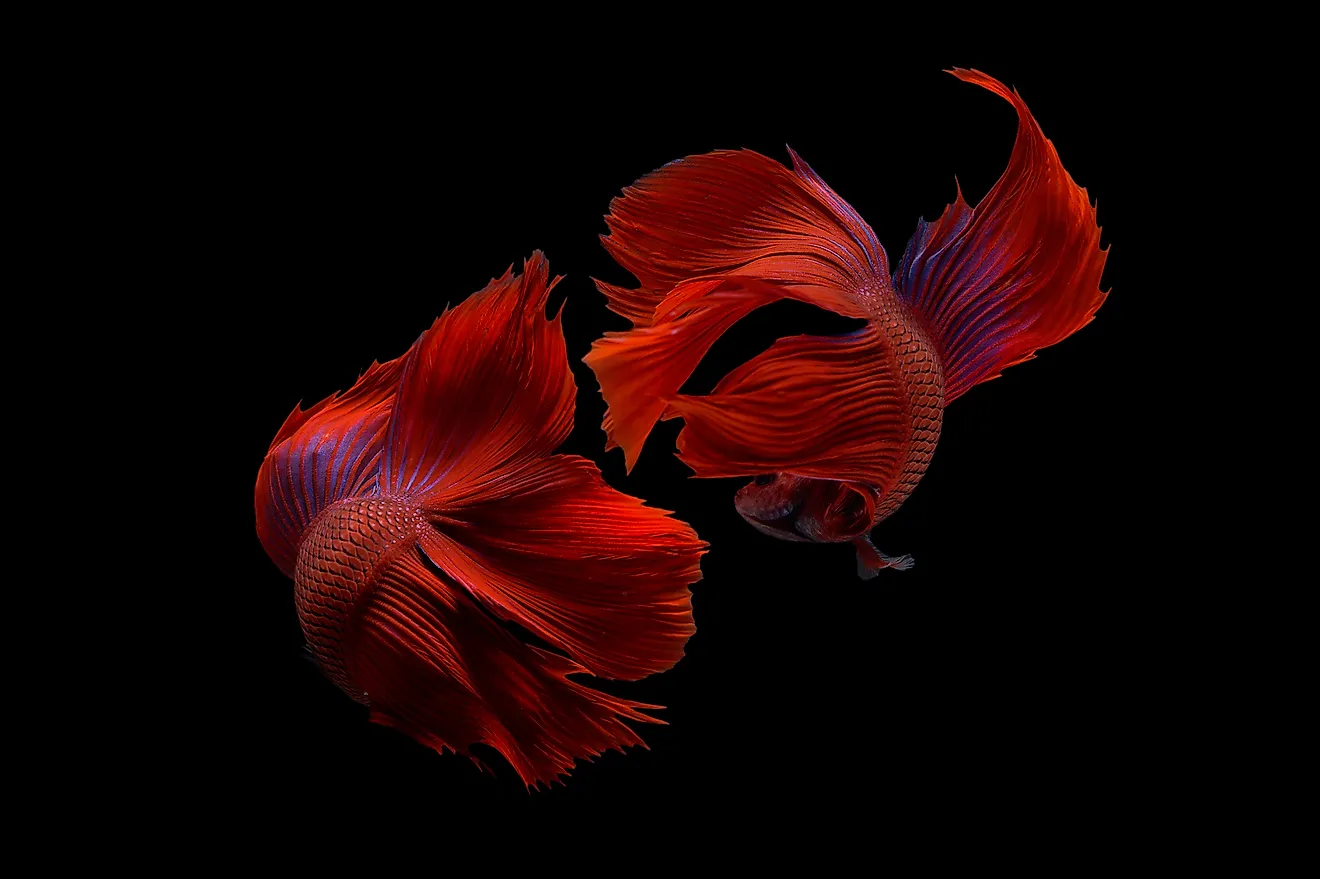
Don’t be fooled by its fragile and often fascinating exterior, these feisty fish are highly territorial and males are known to be extremely aggressive. If placed in the same aquarium they will fight to the death hence the name, so they are often kept separate. Their bright and vibrant color make them a favorite pet fish, next to the popular goldfish. They come in many different colors but the red ones are among the most fascinating and intimidating because of its bright hue.
4. Red Anglerfish
One of the most bizarre-looking residents of the sea, the red angler fish has a porous and rough exterior that makes the fish look like a rock at the bottom of the sea. It has a distinct antenna that the fish uses to attract its meal. It’s not a very active fish, in fact, it spends most of its day sitting motionless, blending among the corals waiting for a fish to lure and eat. These ambush predators inhabit the tropical and subtropical waters of the Indian Ocean and some areas of the Pacific Ocean and the Atlantic Ocean.
3. Summer Tanager
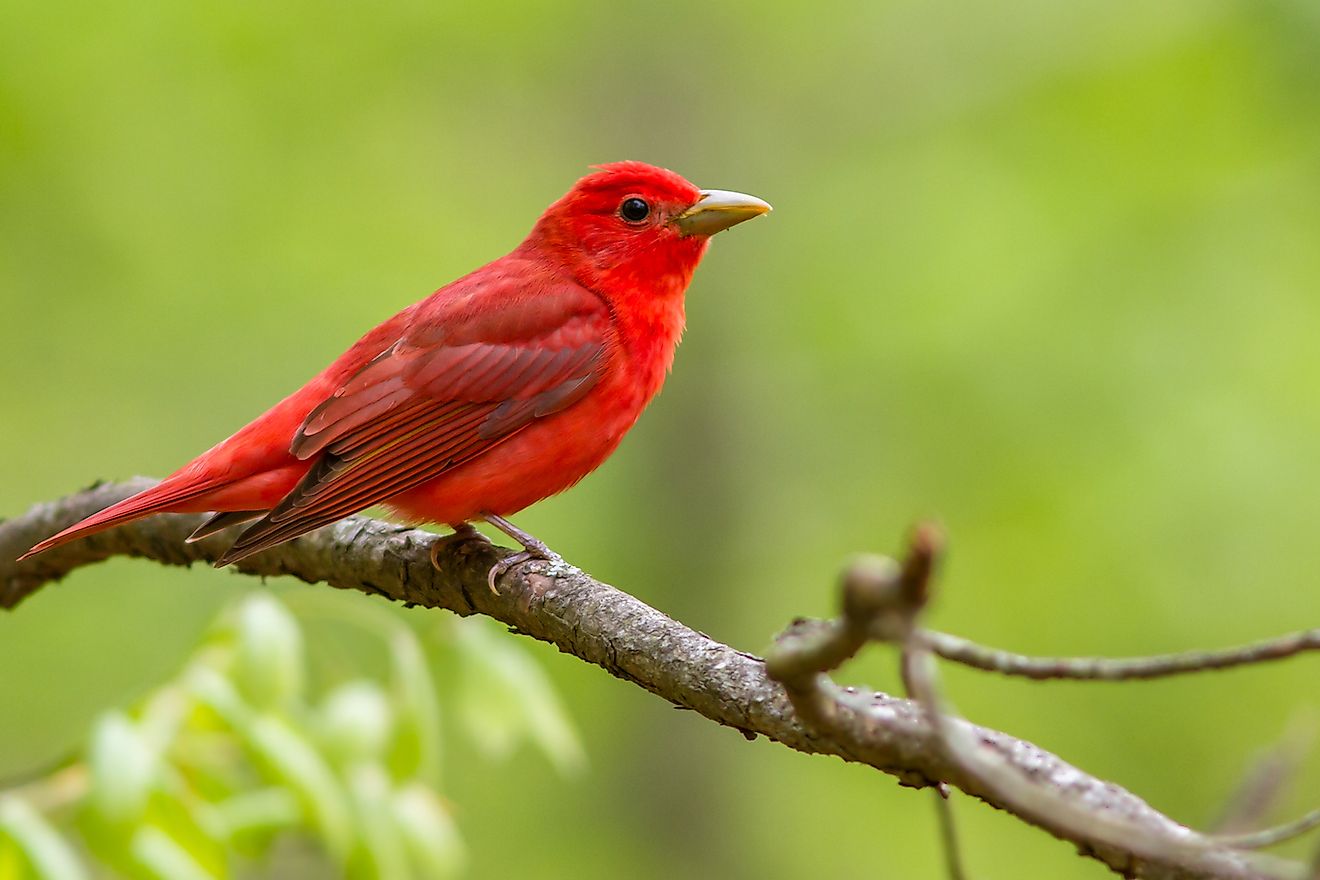
The Summer Tanager is a medium-sized songbird found in North America. They are slightly smaller than an American Robin and can grow up to 7.8 inches in size. They look striking when covered in blood-red feathers and perched amidst deep green leaves in the summer. Males are distinctly all red and turn their brightest by the end of their second calendar year. The Eastern variations are slightly smaller than those found in the West but are deeper red.
2. Hawaiian Honeycreeper
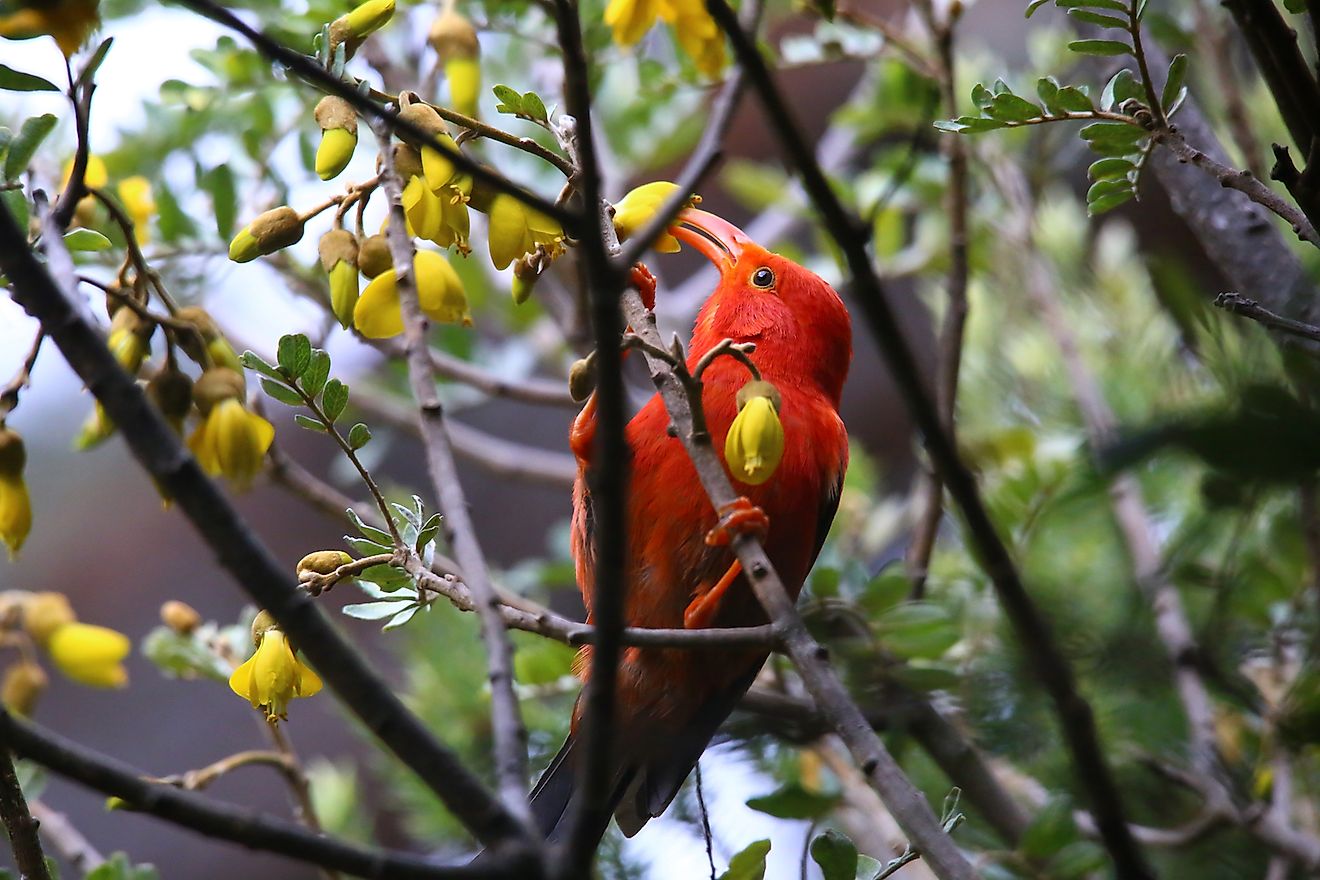
These beautiful songbirds are endemic to Hawaii and mostly feed on nectar and insects. Its long curved bills are adapted to reach down seedpods and flowers, or forage for insects. Males are often more brightly colored than females. They subsist on a diet of snails, slugs, fruits, seeds, nectar, tree sap, and seeds among others. They have a wide range of calls and songs mostly to attract their mate. Most species of these songbirds keep just one mate.
1. Blood Red Glider
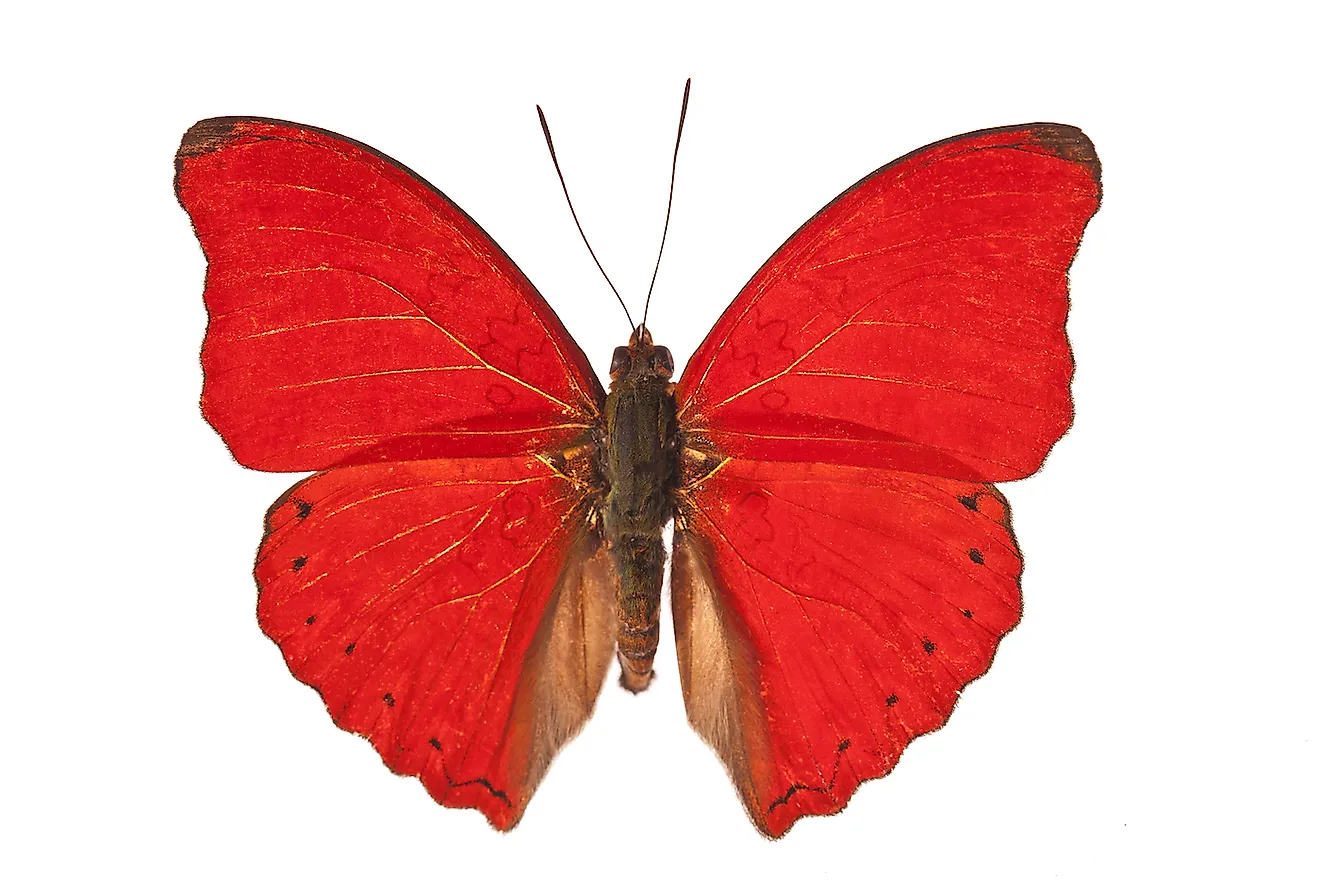
The Blood Red Glider is a species of butterfly found in the forests, from Sierra Leone to Ghana in Africa. Known for their distinct “blood-red” wings, these insects live deep in the forest. They spend the day high in the treetops at an altitude of 100-700 meters, feeding on the nectar of arboreal flowers (flowers that grow on trees). Later in the day they descend and fly closer to the ground.











